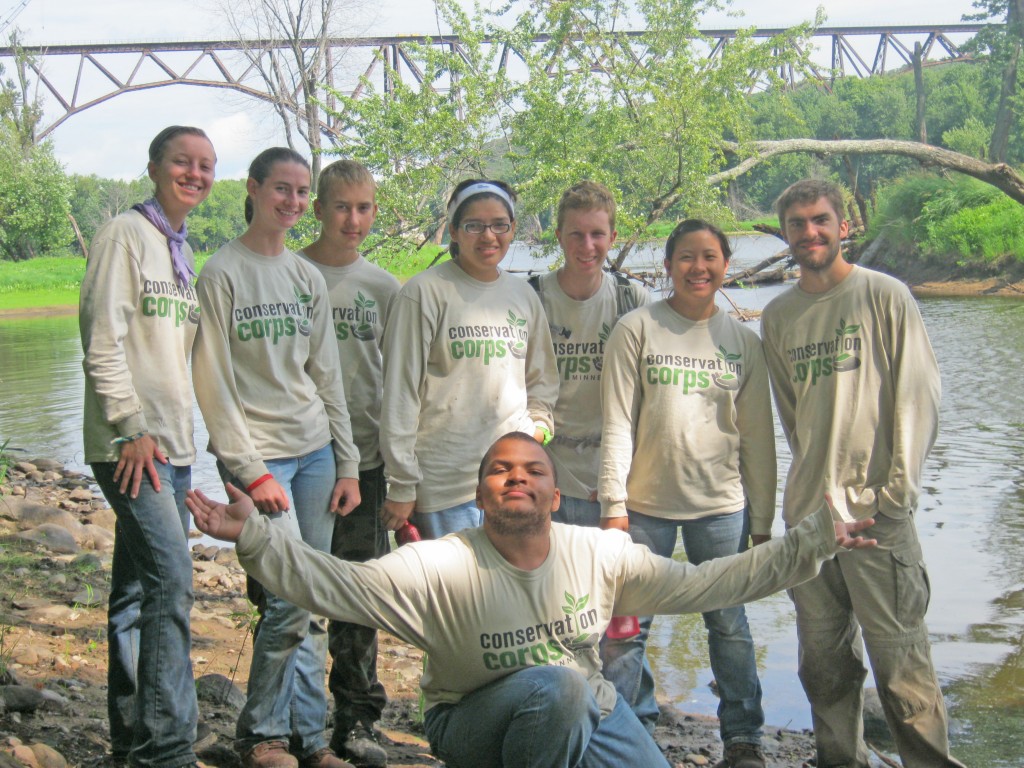Lake Mead National Recreation Area (LMNRA) is, without question, one of the most important recreation destinations in the American Southwest. Straddling Arizona and Nevada, the site attracts more than 7 million visitors annually. These outdoor enthusiasts spent over $312 million last year, making Lake Mead one of the top 10 national park sites by visitor spending.
As one might expect, boating and fishing are popular activities at the 1.5-million-acre park. However, these activities make LMNRA vulnerable to the spread of aquatic invasive species (AIS). Quagga mussels are of particular concern; every year, they cause millions of dollars in damage by clogging pipes, destroying boat engines, and overtaking native flora and fauna.
To help control the spread of quagga mussels and other AIS, the park partners with Great Basin Institute – a 21CSC organization – to engage AmeriCorps members in conducting visitor education. Since the start of this partnership in 2011, GBI’s AmeriCorps interns have provided AIS education to more than 43,000 visitors annually.
During the summer months, 10 interns monitor launch ramps and inform visitors about park rules, water safety, and how to perform “Clean-Drain-Dry”: the practice of properly checking and treating recreational equipment that could encounter AIS and potentially spread such species to other locations. The interns also check boats for proper safety equipment and are trained to provide first-aid in a medical emergency.
During milder months, the interns continue to provide education, but also participate in a variety of other resource management and visitor service activities including: testing water quality, restoring habitats, installing and repairing fences, conducting biological and cultural resource inventories, and creating/managing interpretive exhibits.
Both in the summer and in cooler months, the service of the Great Basin Institute interns helps the national park service staff at LMNRA maintain healthy habitats, promote sustainable recreation, and create positive visitor experiences.
The AmeriCorps interns gain a lot from this partnership as well.
“They get to develop their education and public speaking skills as well as practice a variety of other skillsets useful for conservation work,” said Simone Maule, AmeriCorps Intern Program Coordinator for Great Basin Institute. “They have the opportunity to work in cooperation with the National Park Service and see a lot of beautiful natural areas during their term of service. In addition, as AmeriCorps members, they receive an education award and loan forbearance as well as a modest living stipend.”
The annual visitor spending at LMNRA helps support more than 4,000 local jobs. To sustain these jobs, it is imperative to keep the park’s natural resource infrastructure healthy and capable of supporting consistent visitation. Thanks to the partnership between LMNRA and Great Basin Institute, the national park service can reach more people and meet its mission of protecting our public lands.
Thank you to those who provided information for this blog: Chris Warner, Director of Development, Great Basin Institute; Simone Maule, AmeriCorps Intern Program Coordinator, Great Basin Institute; Taylor Senegal, AIS Research Associate, Great Basin Institute

Frankie Szynskie (right) and Carley Lowry (left) on a boat trip to the Hoover Dam Photo Credit – Marti Williams





